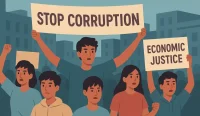A new report reveals a troubling gap in AI in hiring practices. While most IT recruitment leaders acknowledge the disruptive role of artificial intelligence, only 37% say they are well-prepared to manage its impact. The research, conducted by TestGorilla, highlights how automation and advanced analytics are transforming recruitment — but adoption remains inconsistent.
Challenges like verifying candidate skills, ensuring cultural fit, and managing tool integration are leaving many companies exposed. For an industry where competition for top technical talent is fierce, being behind the curve on AI adoption could mean losing out to more agile rivals.
Why AI in Hiring Matters Now
Recruitment has shifted dramatically. Resume screening, candidate sourcing, and even cultural fit evaluations are increasingly powered by AI. Yet hiring managers often feel these tools outpace their ability to manage them effectively.
Organizations that lag behind face slower time-to-hire, weaker quality of hire, and higher turnover from poor matches. They also risk reputational damage if candidates perceive hiring processes as unfair or opaque.
Where Employers Struggle Most
Verifying candidate skills remains one of the biggest challenges. Many hiring managers doubt resumes accurately reflect true abilities, and AI filters may pass over good applicants or let weaker ones through.
Assessing cultural fit is another stumbling block. Nearly half of leaders admit they lack reliable methods to gauge how well a candidate might mesh with their team’s values and work style.
Finally, tool integration is a consistent headache. HR systems often don’t share data efficiently, leading to outdated profiles and fragmented hiring workflows.
AI in Hiring: Leaders Say They’re Not Ready
Even IT leaders are admitting they don’t have the systems or strategy for AI-driven recruiting. Take control now — post your job on WhatJobs and access tools that help you hire smarter. Free for 30 days.
Post a Job Free for 30 Days →Investment Plans in IT Recruitment
Despite these issues, optimism remains. About 67% of IT teams say they plan to invest in new sourcing tools within the next year. Marketing departments are even more proactive, with 75% reporting similar intentions.
This suggests companies understand the urgency of adapting, even if implementation is uneven.
AI and the Candidate Experience
For candidates, AI-driven assessments are becoming more common: coding tests, gamified problem-solving, or predictive behavioral screens often appear at early stages of hiring.
While these tools can make hiring faster, they also risk alienating candidates if used without transparency. Employers need to combine automation with human oversight to ensure fairness and engagement.
Broader Implications for the Workforce
The adoption of AI in hiring is part of a larger shift across the labor market. As inflation cools and hiring slows in many industries, efficiency and accuracy in recruitment matter more than ever. Companies that master AI tools may secure an advantage in finding and retaining talent, while those that lag could face longer vacancies and weaker pipelines.
FAQs About AI in Hiring Practices
Q1: What does AI in hiring involve?
It refers to using artificial intelligence for resume screening, sourcing, skills testing, and cultural fit analysis.
Q2: Why are many IT leaders unprepared for AI in hiring?
They struggle with outdated candidate data, poor tool integration, and limited ways to verify skills or evaluate culture fit.
Q3: What risks come with AI in hiring?
Bias, errors in filtering applicants, and lack of transparency can all undermine fairness if there’s no human oversight.
Q4: How can employers improve their approach?
They can invest in better systems, sync their databases, add skill assessments, and ensure humans remain part of key hiring steps.
How One Recruiter Adapted
Jessica, an IT recruiter in Chicago, believed her team’s AI tools were up to date. But turnover climbed and time-to-hire stretched out. She discovered her candidate data was months old and systems didn’t connect well.
She revamped her process by adding short coding challenges early, integrating her data platforms, and training managers to spot soft skills. The result was faster hiring and stronger retention — proof that preparation is as vital as awareness.




